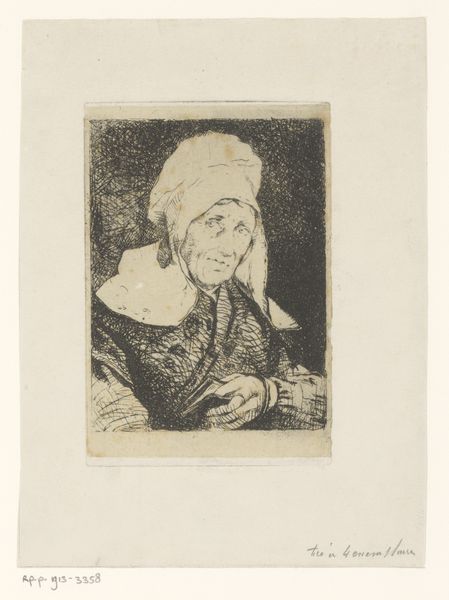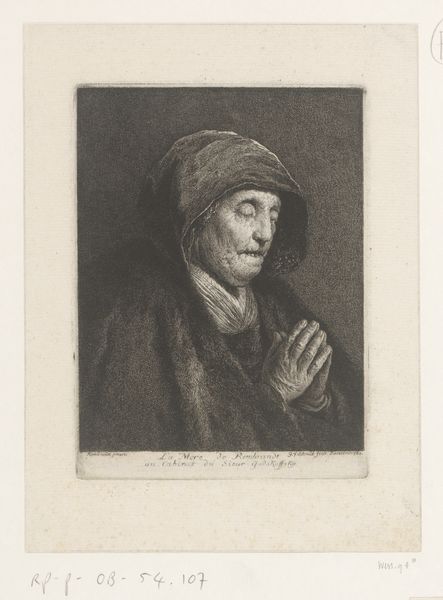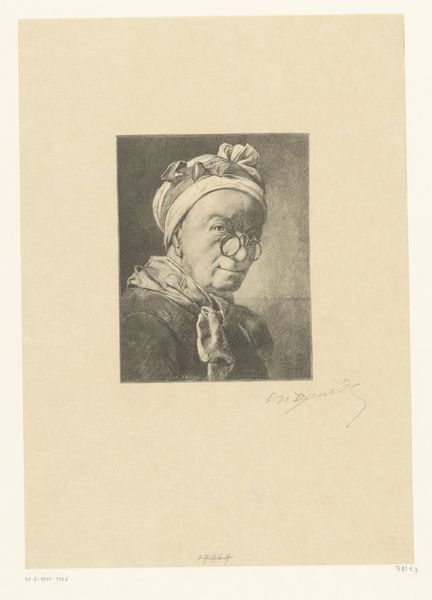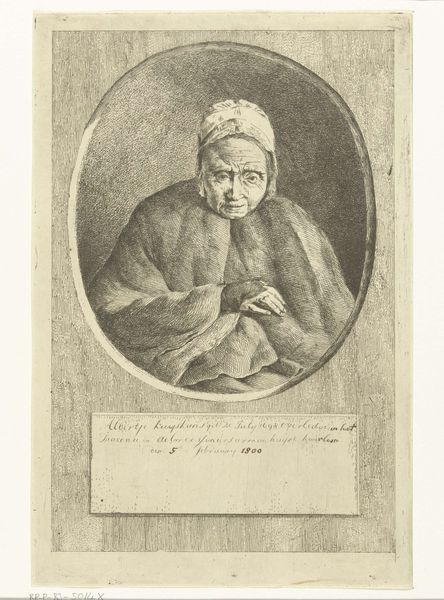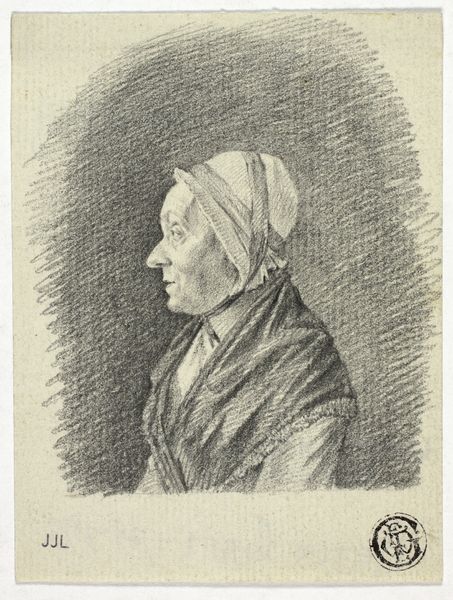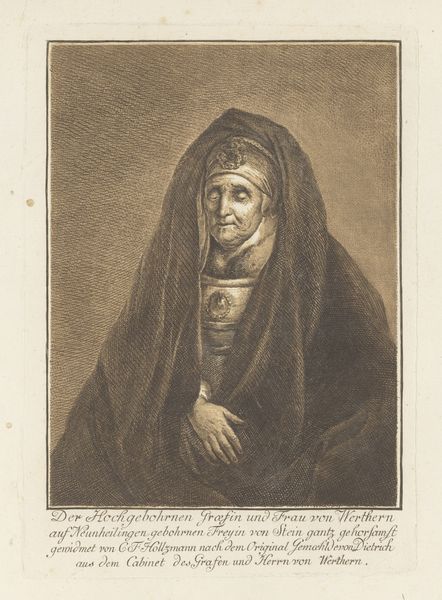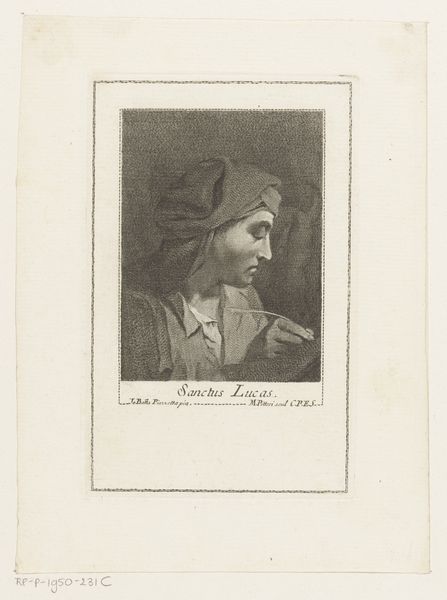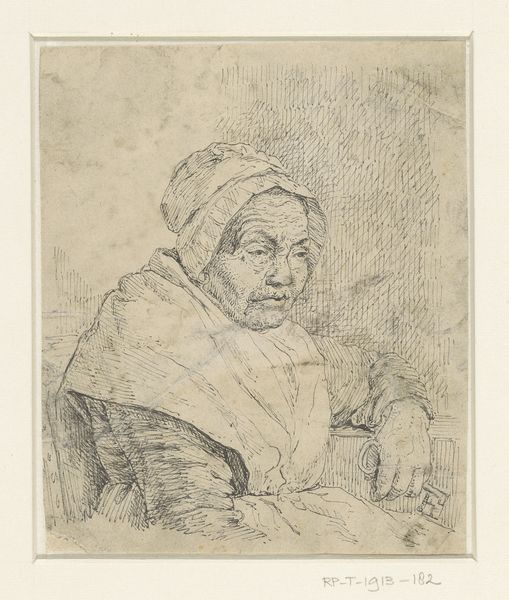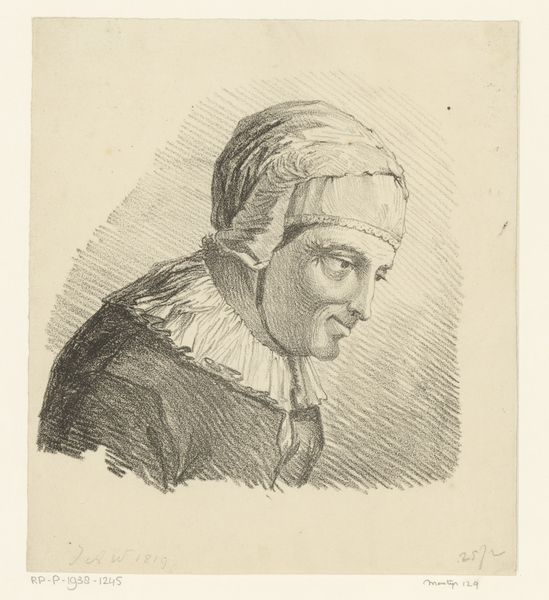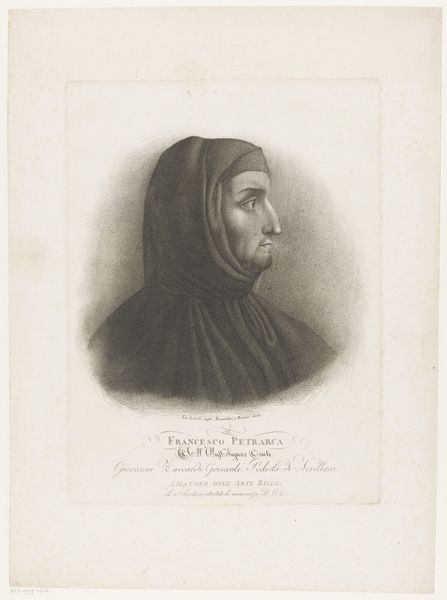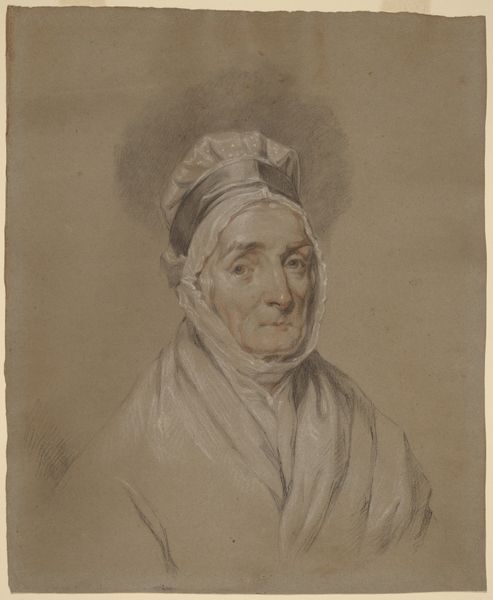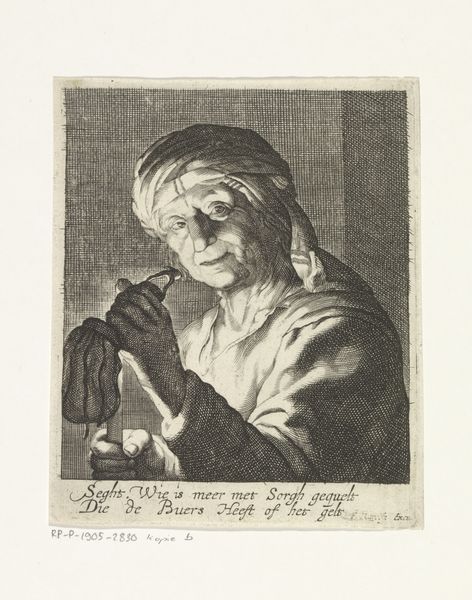
Dimensions: height 280 mm, width 206 mm
Copyright: Rijks Museum: Open Domain
Curator: Ah, "Oude Vrouw," or "Old Woman," an engraving created around 1765 by Johann Friedrich Bause. The work strikes me as incredibly poignant, an intimate window into aging and vulnerability rendered with astonishing precision using the print medium. What catches your eye about this print? Editor: I am drawn in by her downcast gaze; there is an echo of weariness. The draped fabric and tightly wound bandage suggest an element of physical struggle too. Given its date and medium, I am keen to think about its accessibility as a reproduced image; perhaps it was made to offer compassion in the wake of poverty or suffering. Curator: That’s an interesting avenue. Consider the engraving process: the artist meticulously carves into a metal plate. In this case, the image would have been accessible due to prints being much more economical compared to paintings. How might its material production affect the consumption and reception of this artwork during that era, as opposed to how we view it today? Editor: I imagine it provided a different sort of engagement. Prints, given their repeatable nature, allow a shared and reproducible experience. They invite speculation on the part of those viewing the print, prompting us to examine not just her presence, but the broader social fabric to which she belonged. And the way Bause’s etching captures the deep lines on her face--there's so much storytelling. Curator: Exactly, that visual narrative is powerfully intertwined with the tactile and mechanical labor of its creation. Each line carries the weight of the process, almost as much as it seems to carry the burden of its subject’s circumstances, prompting a debate surrounding social dynamics of production and distribution as much as our perception of human resilience. It's not just about artistic skill, but about how art could intersect with society, how such works can expose power imbalances, exploitation, or human connection through both material construction and its image. Editor: Yes, and those material and reproducible qualities don’t erase a spiritual resonance for me. The image carries what the writer Julian Barnes called an ability "to console and to challenge." Do we simply ponder this from a distant, theoretical perch, or might we also use her image to think about our shared humanity? Perhaps by lingering on this engraving a bit longer, we might better approach an authentic relationship to history, memory, and what it means to meet another soul as the effects of living take shape. Curator: Absolutely. The capacity to analyze an object’s impact—be it its material accessibility, historical background, or the shared human experience—forms our deeper connection and helps to unlock richer insights within art history.
Comments
No comments
Be the first to comment and join the conversation on the ultimate creative platform.
